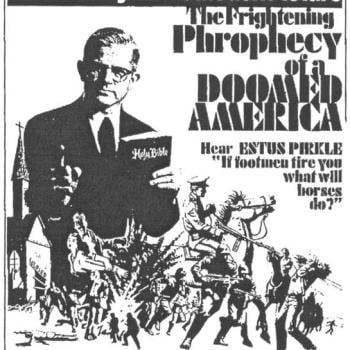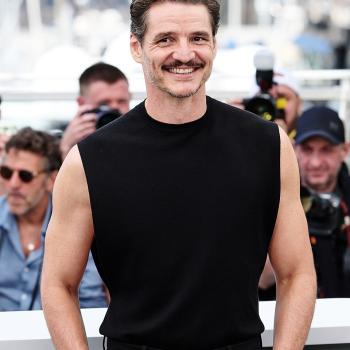
Photo Credit: Bosc d’Anjou
When I was a kid, two pieces of media ruined a plethora of movie endings for me. The first was one of those web series, a real product of its time in which sickeningly bright colors met outrageous violence coalesced in a sort of pre-ironic way: Happy Tree Friends (1999-2016). I recall the series (or was it also a site?) trunctating famous horror films, the furry little psychopaths from the main show playing all the lead roles, goring it up as usual. Thus, I learned all the best-known scenes from The Exorcist (1973) and The Texas Chainsaw Massacre (1974). But it didn’t really matter (come to think of it, it may have even been some other aughts web series—they all had the same thing going on, more-or-less). Those episodes didn’t show me the actual movies. At the time, it felt like they had, of course. But as I got older and watched the films, I found that what I’d learned meant nothing. The magic was in the camera, not in knowing what happened.
The other great ruination of future enjoyment, however, was a bit different. Sometime in middle school around Halloween-tide, I remember involuntarily getting glued to my TV, so much so that I was late to see friends at the park. What had gripped me? The 100 Scariest Movie Moments (2004). I learned so much, became aware of Don’t Look Now (1973), Wait Until Dark (1967), and Audition (1999). Unfortunately, more often than not, the “scariest” scene was also the climactic scene, one the commentators would show and explain with no regard for my delicate tween brain. In many cases, it took me years to watch these movies, afraid that there was no use, since I’d spend the whole thing ruminating on what was to come, drawing the line from A to B to C past all the thrills and movie magic. I’ve just now taken on among the last of these, a real hallmark in my life and my love of horror: The Vanishing (1988).
I will end the cycle of violence and spare you the reveal. I don’t want anyone else to know before they should; I know how it feels. But this case is among the most egregious. The film follows a boyfriend (Gene Bervoets) as he searches for his girlfriend (Johanna ter Steege), who, well, vanishes, into thin air one day as they drive to France for a vacation (they’re Dutch). From almost the beginning, we know who did it. Much of what we see is mundane detail: the man coming to terms with his new life, realizing he can’t, slowly accepting that he just has to know what happened. The assailant is, we eventually learn, more than happy to oblige him. And that’s what 100 Scariest Movie Moments showed me all those years ago: the man learning what happened to his girlfriend. The swine—it’s even the last shot in the movie.
As it turns out, nothing was really ruined. In fact, it gave me an appreciation for how the film presages what’s to come, most especially in an early sequence (in fact, one of the earliest sequences). The two are driving through a tunnel and get into an argument because he, in his pigheaded way, has forgotten to fill up the tank. They’re stranded and his ego’s bruised, so he rushes away to the nearest gas station But she’s terrified. The camera stays close to him, his face turned away from the car and toward us; we hear her scream over and over. He wants to remain unmoved, but we can feel him—if not see him—wince. When he returns, she’s gone from the car. Is this the vanishing of the title? It turns out not, as he sees her at the edge of the tunnel while driving out. She’d gone somewhere brighter, safer.
The irony, of course, is that she’ll be abducted in broad daylight soon thereafter. They’re stopped at a crowded rest stop on a highway of all places when she disappears from the film and the world.
That brief sequence sets up everything, down to the last detail. We see that Rex, the boyfriend, is a stubborn guy, that he will have to know what happened down the road. He won’t—can’t—lose control. We get a refined sort of a jump scare, dread that—so soon—the vanishing is upon us. By the same token, when we see she’s all right, we find relief. But not fully. We know a disappearance is coming. We’re even more on edge now, realizing that, just perhaps, there’s more to fear in the light of day than the dark of night.
When we meet our villain (and again we get to know him quite early on) we learn that, he, Raymond Lemorne (Bernard-Pierre Donnadieu), is a respectable bourgeois family man. Nothing is outwardly amiss, except perhaps that he’s a bit skittish. Is that, though, really all that weird for the effete bourgeois? He’s got something of BTK about him, or even John Wayne Gacy—he’s just a guy. But way, way more normal than either BTK or Gacy, not pretending. Raymond actually is your average professional-class joe. He just also happens to want to know what it’s like to abduct a woman, and much of what we see on his end of things are his varied—and nearly always failed—attempts to Ted Bundy a woman into his car. We learn a bit about the “why” of his desires. But that feels tacked on. What matters is that he has to know what it feels like. ‘Tis curiosity drove the psychopath. ‘Tis curiosity drove the victim. ‘Tis curiosity drove the boyfriend.
I got none of this from that final scene all those years ago. Watching The Vanishing has cemented something in my mind (admittedly obvious for the real cinema-heads out there)—it’s not all about the plot, not even for a great movie with a great “twist.” It’s a pity we live in the age of the cliffhanger, the bingeable show—an era in which all that seems to matter are labyrinthine plots, expanded universes, and immense casts of characters. Not that plot is bad. But sometimes an obsession with what happens erases how it happens. That’s what kept me away from The Vanishing for so long in any case. ‘Tis curiosity finally drove me to learn the truth.













